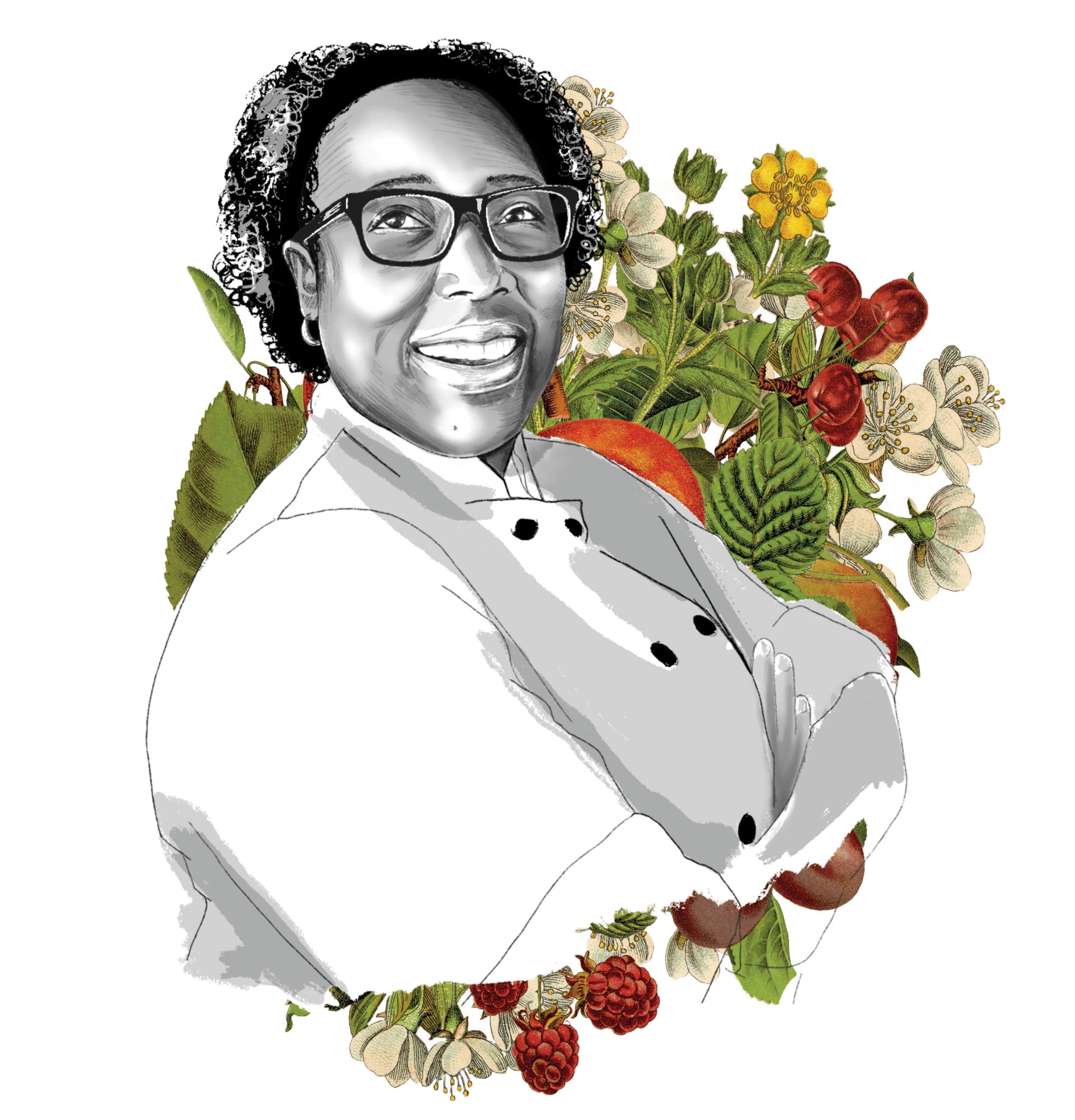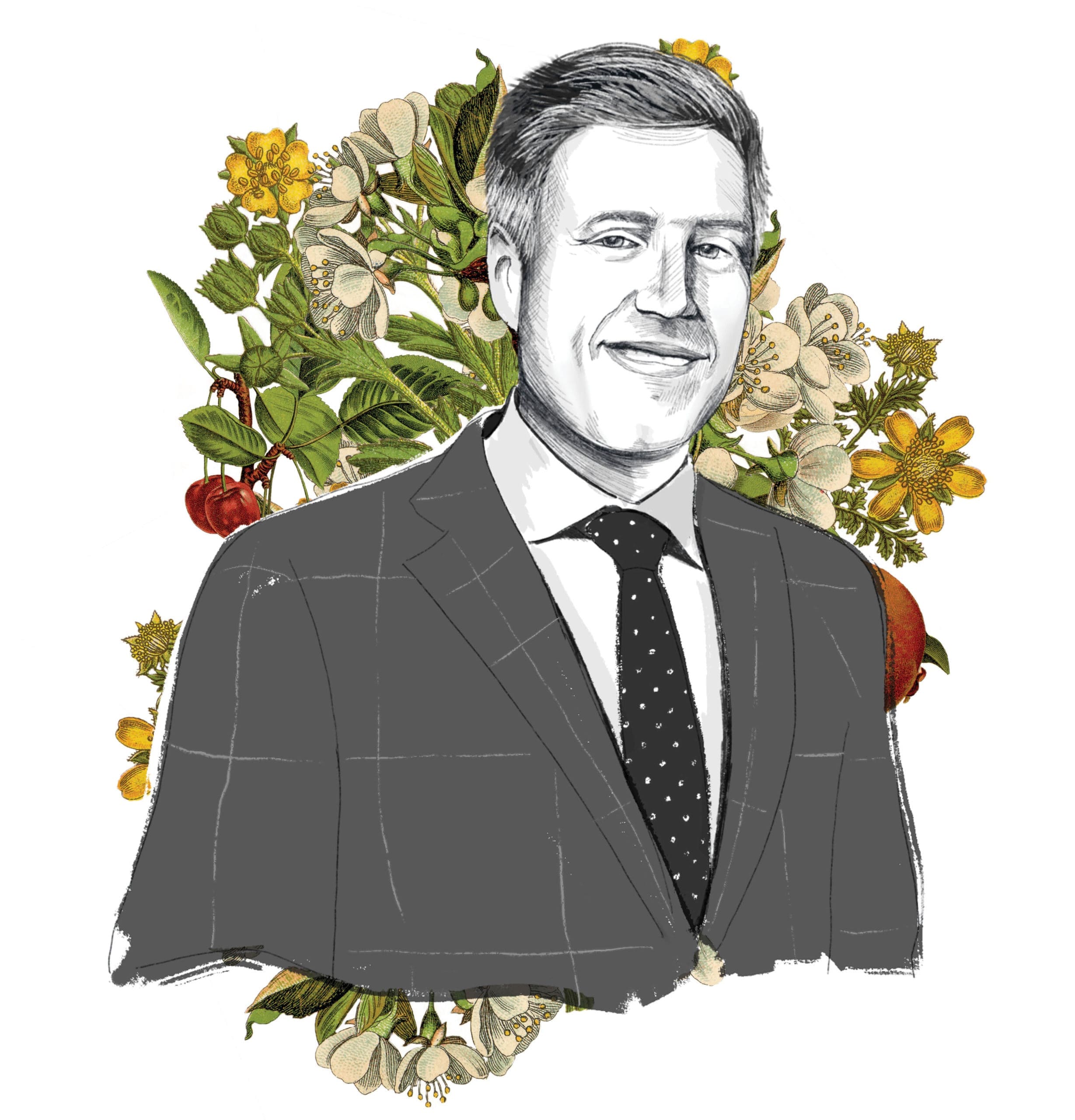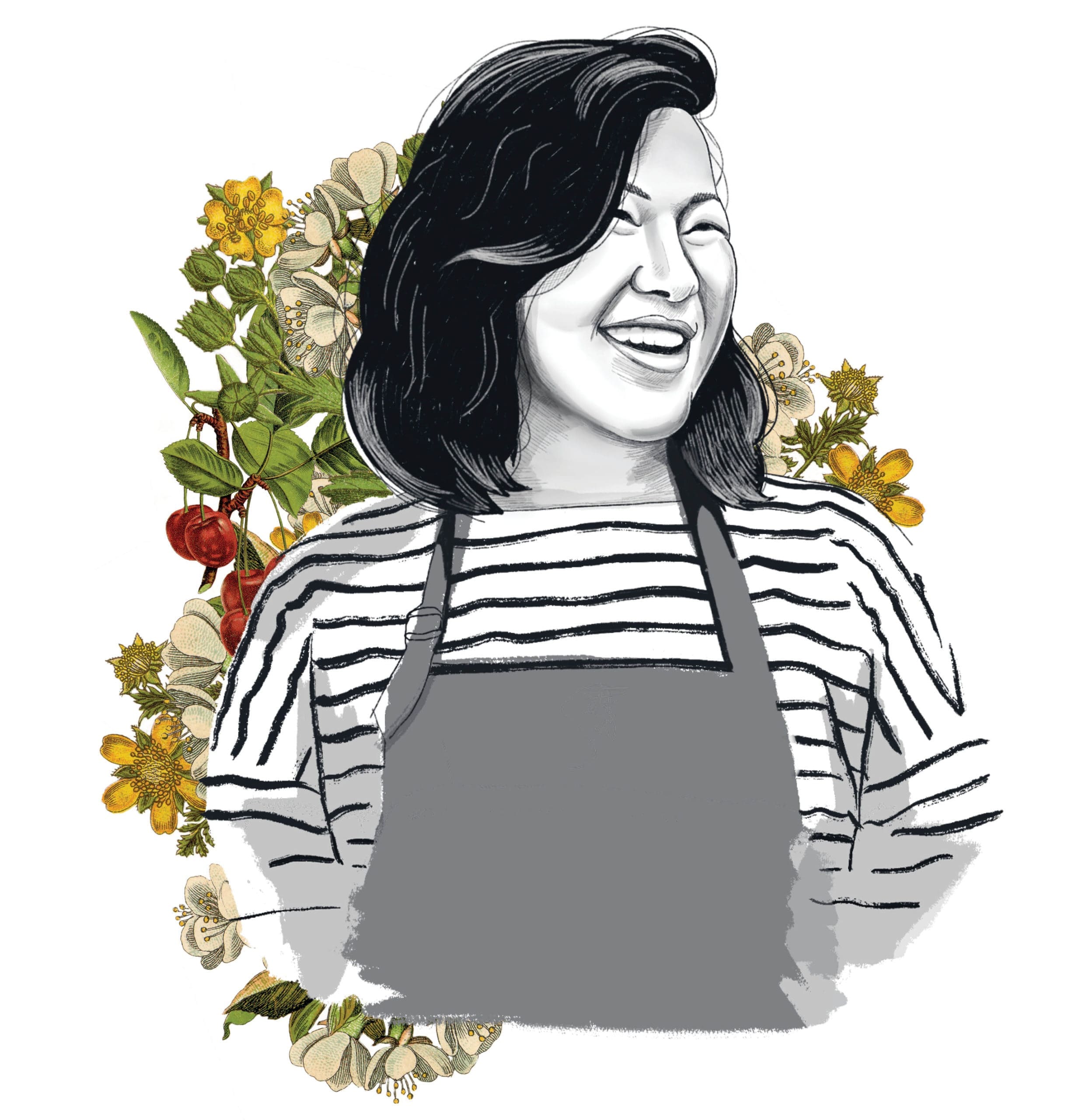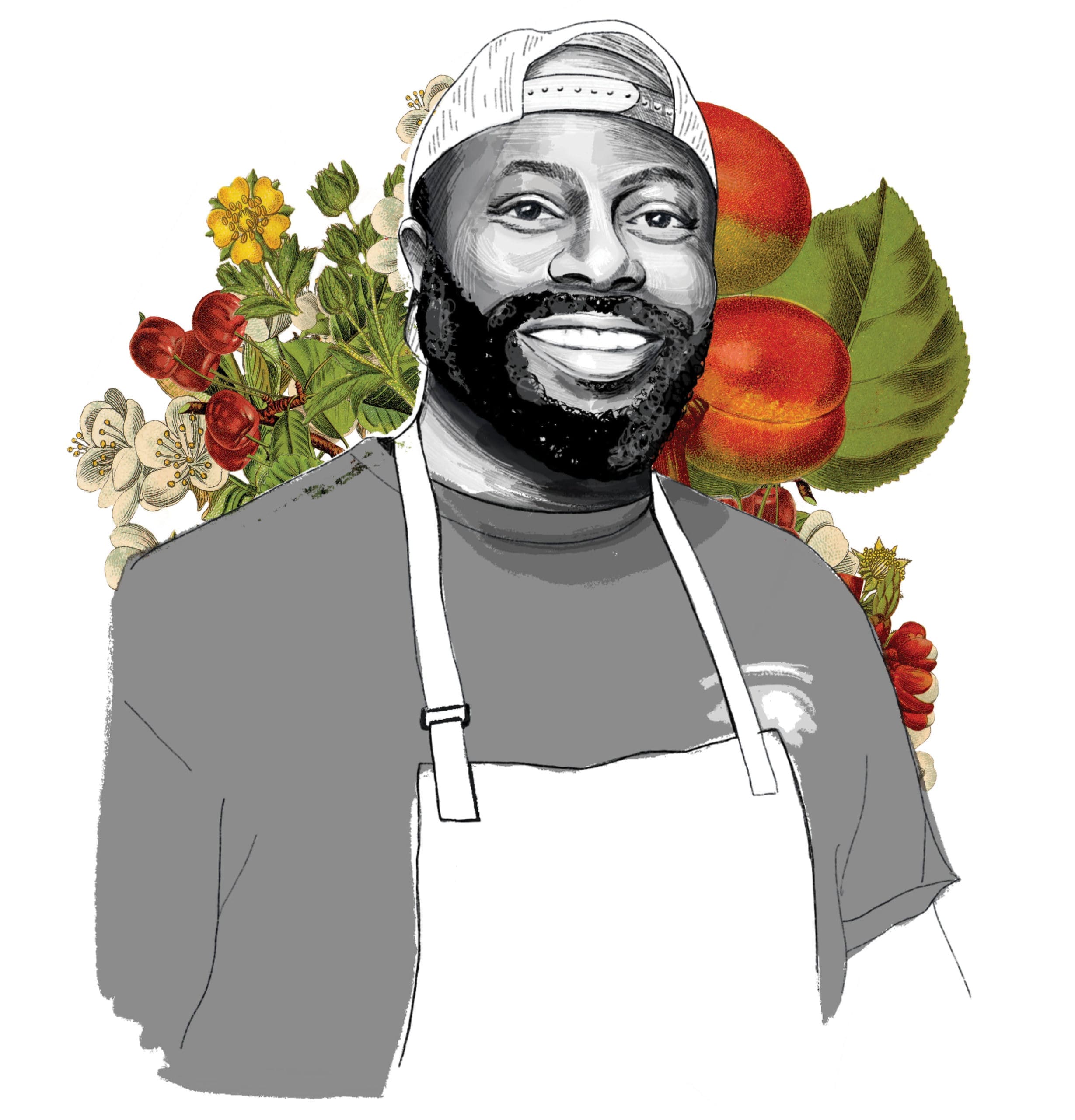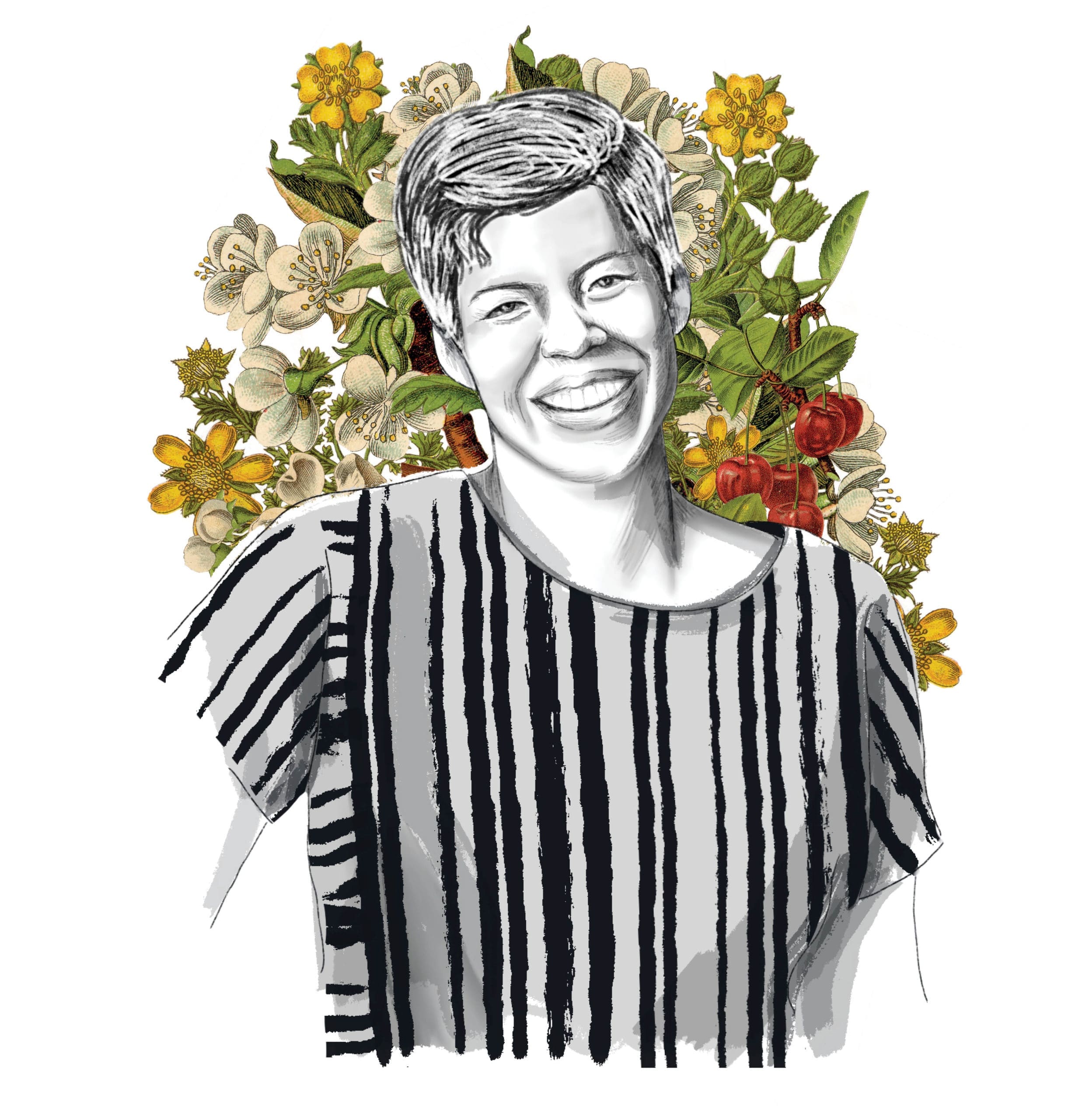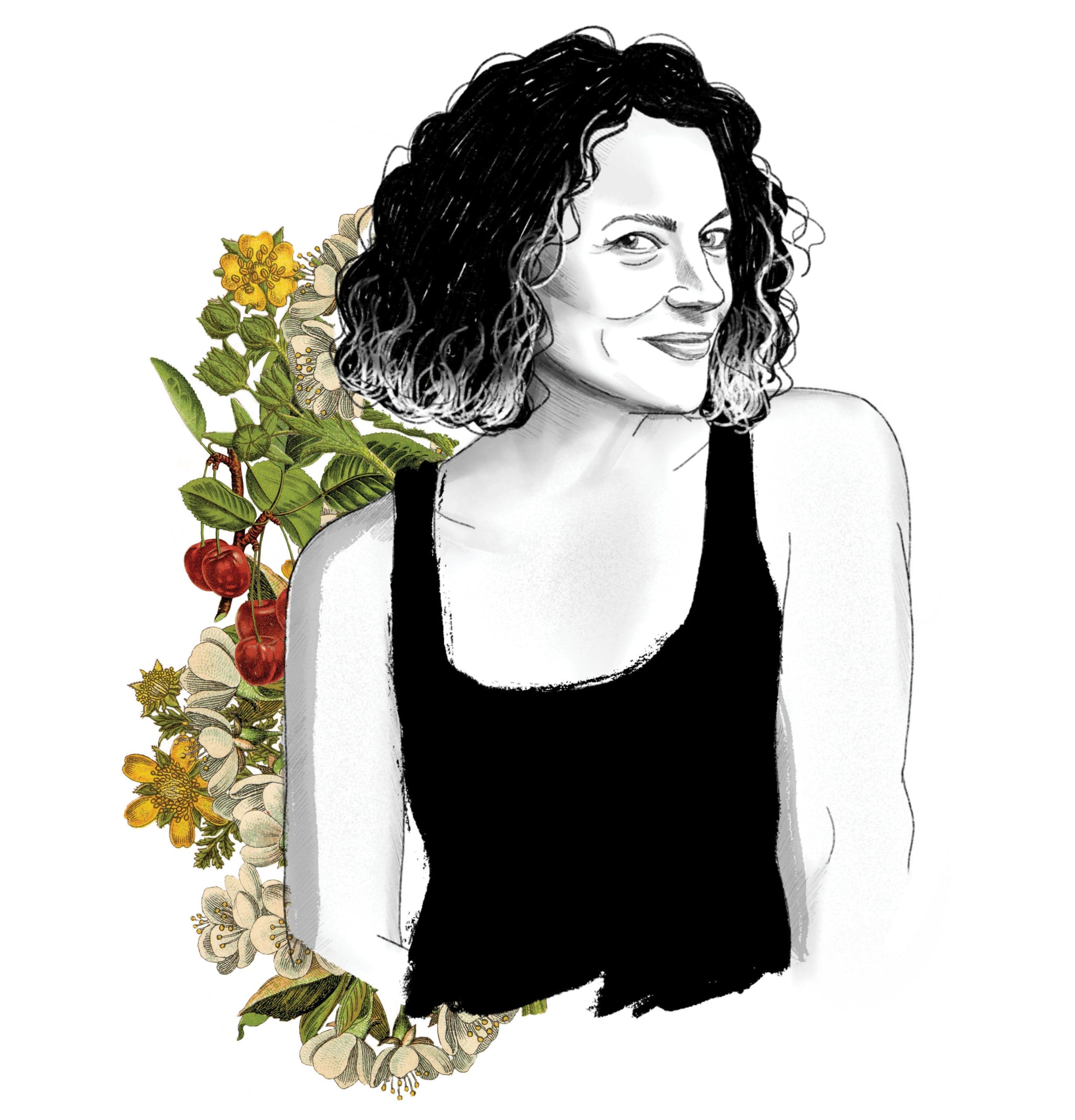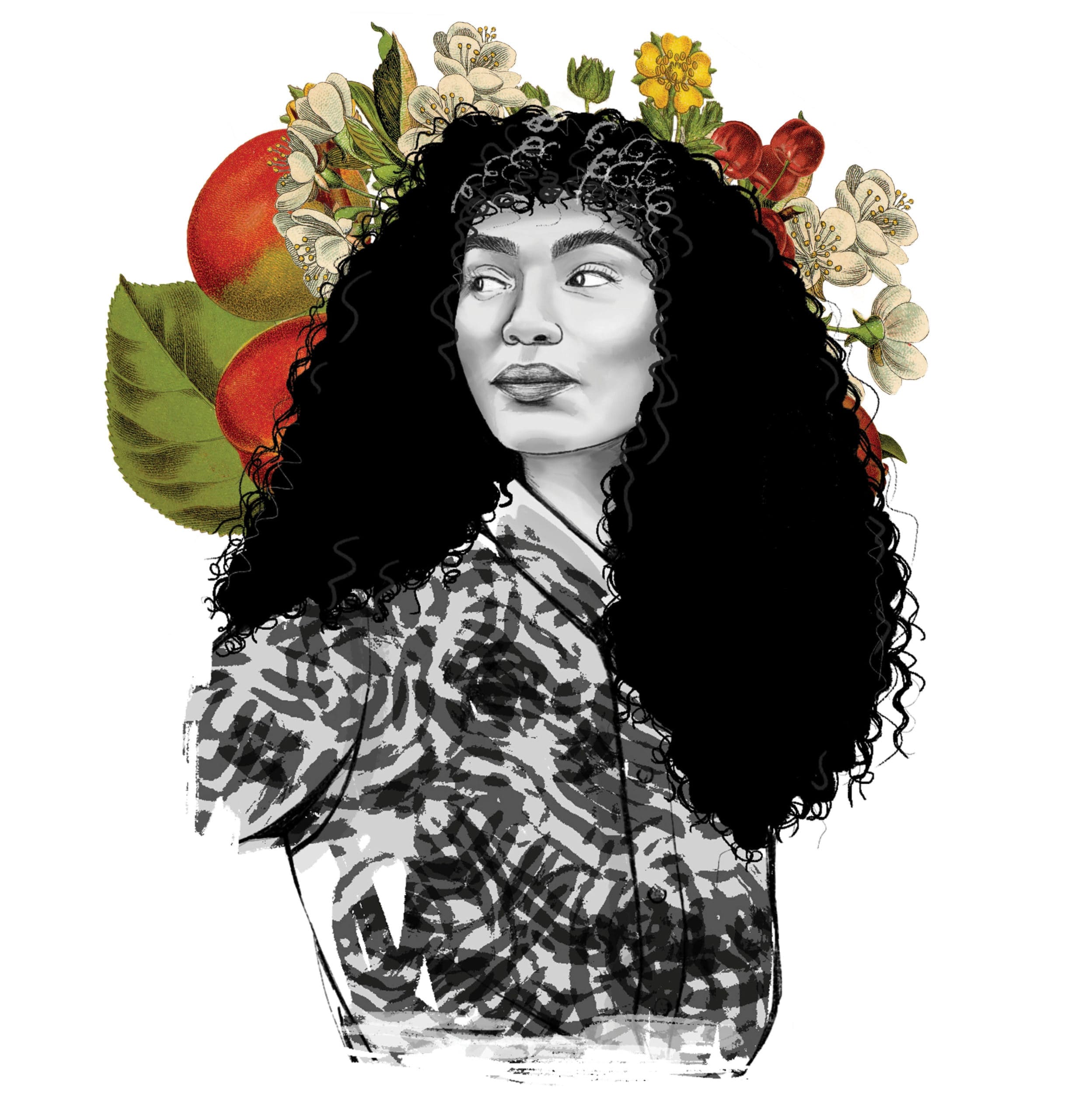“Why does food matter?” is a daunting question. As a writer who’s devoted her entire career to celebrating food and the people who’ve built their lives around it, I had never really stepped back to seriously consider it. At first, the answer seems obvious: We need food to live. But in today’s world, food is so much more than simply sustenance. It’s entertainment. It’s an outlet for creative expression. It’s a source of conflict and a solution.
Food takes on a different meaning and importance to each of us. It’s both deeply personal yet one of life’s few universal truths. What I learned while working on this feature is just how complicated this subject really is. I spoke with chefs whose driving passion is to share it with others. With farmers whose livelihood revolves around growing it. With activists who see it as a medium for change. Each story took me on a new journey and encouraged me to rethink how I approach food in my own life.
The conversations I had with these 10 individuals weren’t always easy. Yes, food can be celebratory and exciting, but it can also be complex and uncomfortable. As we all reflect on the challenges of the past year and ready ourselves for what’s ahead, it’s important to remember the power that food holds. It’s something we all need and something we all have in common. It has the ability to open our minds and bring us together. The stories that follow are a collection of experiences, lessons and musings about the ways — both big and small — food plays into our day-to-day lives. Taken altogether, they illustrate why food is so entangled in our culture and so synonymous with our identity. This is why food matters.
IT STARTS A CONVERSATION
Mashama Bailey
Executive Chef and Partner at the Grey
Racism has been baked into the clay and cast-iron pots across this country. In almost any city around the world, you’ll find the people who have migrated there represented by local restaurants. But Black folks’ migration to this country was forced. Black peoples’ contributions helped build these cities and provide texture. In spite of all of this, because of slavery, Blacks have adopted American culture as their own. After I returned to the South to open the Grey, I stepped back and looked at how much Black people have influenced all things American, and food is no exception. For me, American cooking and African American cooking are not that different.
Restaurants play a big part in changing people’s perspectives. They allow someone from outside a culture to learn or grow through exposure to different ingredients and preparations. With so many restaurants in America and all of us being exposed to one another’s cultures through food, why is our society so divided? When I decided to move back to Savannah and start a restaurant with my business partner, Johno Morisano, little did I know that our partnership would test this theory. It would test the basic differences in American culture and how we coexist.
Before Johno and I considered whether we had potential as partners, we asked ourselves and each other, What could we add to the industry? How would our work be different? I also needed to prove to myself that Black American food is more than what people expect it to be. I wanted to show its value.
At the Grey, we celebrate the good aspects of American culture while exposing the bad. We know that true understanding is going to take a lot of listening, sacrifice from those who hold power and a passing of the torches by those who have maintained control of the narratives. We discuss the influences of slavery and other migrations throughout the South. We celebrate the heritage of African American culture through the lens of the African Diaspora. We talk about all of our influences, from growing up in New York City and traveling around the country. We try to tell that story through our food, our design and our service. In many ways, we’re still figuring that out as we continue to learn from our mistakes and inspire our team. All we can hope is that through our work we can heal, gain perspective, and continue to grow from a place of trust and respect. In the time of a global pandemic and one of the largest uprisings in decades on behalf of Black Americans, we present an example of how uncomfortable these conversations are going to need to get.
As executive chef of the Grey in Savannah, Georgia, Mashama Bailey has earned a number of accolades, including the 2019 James Beard Award for Best Chef Southeast.
Reprinted with permission from Black, White, and The Grey by Mashama Bailey and John O. Morisano, copyright © 2021. Published by Lorena Jones Books, a division of Penguin Random House, LLC.
IT TAKES YOU ON A JOURNEY
Bobby Stuckey
Master Sommelier
My wife, Danette, is the most patient woman. For the entire 20 years of our marriage, I’ve worked six days a week. Sunday is our day together, and I’m confident this day wouldn’t be as special to us if I had two days off. On Sundays, we typically head to Bart’s, our favorite vinyl shop in Boulder. We don’t need more records, but half the fun is picking out something new to listen to that evening. One weekend it might be Ethiopian funk, the next it’s experimental punk rock. We’re omnivores of music and wine, pairing each album with a fitting bottle.
Music, like wine, is all about discovery; both have their own sense of terroir and can transport you to a different place. We might pair that Ethiopian funk record with a vivacious white from the Canary Islands or punk rock with a bold sangiovese. We’ve kept this tradition going for years, and it was the muse for my wine bar, Sunday Vinyl. Just like at home, we like to keep the music and the wine list varied and unexpected. Sure, sometimes you want the hits, like a rousing Queen ballad or an oaky chardonnay, but other times you thirst for something new.
BOBBY’S MUSIC AND WINE PAIRINGS
Billie Holiday’s Lady Sings the Blues with a 2015 Jean-Louis Chave Hermitage: The bluesy, smoky, soulful music beautifully complements this seductive, earthy expression of syrah.
Herb Alpert & the Tijuana Brass’s South of the Border with a 2018 Veyder-Malberg Grüner Veltliner: This crisp bottle works well with warm weather and spicy food. It will put a dance in your step, just like the upbeat sounds of the amazing horns.
Fleetwood Mac’s Rumours with a Foradori Teroldego: Elisabetta Foradori is the high priestess of teroldego, a deeply colored red wine grape grown in Italy’s Trentino region. Her distinctive wine can keep up with this iconic record.
The Clash’s London Calling with a 2018 Ronco del Gnemiz Sauvignon Sol: I love to talk punk rock with Zeno Palazzolo, the son of the winemakers at Ronco del Gnemiz. This electric wine is a classic, just like this album.
Maria Callas’s Pure with Krug Champagne: The exemplary sounds of Maria Callas, with her powerful yet ethereal voice, pair wonderfully with a grand Krug.
Bobby Stuckey lives in Boulder, Colorado, and is the cofounder of the James Beard Award–winning Frasca Hospitality Group and Scarpetta Wine. He is also the cofounder of the Independent Restaurant Coalition, formed to help save local restaurants.
IT’S PART OF OUR IDENTITY
Hetty McKinnon
Food Writer and Cookbook Author
Breakfast was a grand affair in my childhood home. Each morning, I’d wander downstairs to find my mother hunched over her wok, diligently stir-frying soy sauce noodles or tossing fried rice. As a non-English-speaking Chinese immigrant living in Australia, she cooked to express herself and to connect with the home and culture she left behind.
Growing up, I felt like I was trapped between two cultures. I didn’t feel comfortable with my Chinese heritage nor with my place as a second-generation Australian. The food we ate at home, especially my mother’s elaborate nightly banquets, served as a daily reminder that I was different. (As an angsty teen, I wanted steak with mashed potatoes and peas, a meal my mother made occasionally as her way of dabbling with Western cuisine.)
After I had my own children, I fell into a career in food running my own salad delivery business. Soon, my mother started helping me in the kitchen. It was while we were cooking alongside each other that food began to take on a new meaning. Perhaps for the first time, I saw my mother as more than my parent, but as a woman who has lived many lives: as a dreamer, a creative, a survivor. I began to understand what food meant to her and the immense pride she felt in keeping her family food traditions alive for her own children.
The more I cooked, whether that be Chinese dishes or the global flavors on display in my cookbooks, the closer I felt to my heritage. As a Chinese kid who grew up in the West with rudimentary Cantonese language skills, I finally began to lay claim to my Asian-ness through food. The ebullient, full-bodied flavors of my youth welcomed me back, helping me understand and feel proud of the person who stared back at me in the mirror.
Today, the food I cook is not distinctly Chinese nor Australian, but rather a third interpretation of the two cultures. It’s my gateway to exploring my identity as a third-culture person who has roots in the East but grew up in the West. Although I love Chinese dumplings, you’re more likely to find my family eating ones filled with spinach and feta than water chestnuts or napa cabbage. And come dinnertime, my mother’s signature curry vermicelli has a spot on the table alongside my Aussie-inspired Vegemite ramen noodles. The food we cook and share with others can so powerfully connect us to our past while creating pathways to the future. It allows the children of immigrants to write a new narrative about who we are and to show that our story is just as authentic as the generation before us.
Hetty McKinnon is a best-selling cookbook author and New York Times recipe contributor living in Brooklyn. Her latest tome, To Asia, With Love, is out this April.
IT CONNECTS US WITH OUR CULTURE
Sean Sherman
Founder of The Sioux Chef
Have you ever wondered why there aren’t Native American restaurants? When most people think of Indigenous foods, an Indian taco probably comes to mind: a piece of fry bread mounded with spiced ground beef, shredded cheese and iceberg lettuce. In actuality, this is a poor representation of the amazingly diverse legacy of our Native ancestors. To begin to understand Indigenous food systems, first you have to understand how destructive colonialism was — and continues to be — for Native people.
The Indigenous perspective of our histories is largely removed from our curriculums, so few people understand the plight of our many communities and the atrocities we faced. In the 1800s, genocidal destruction completely decimated entire crops, seed banks and communities. The 1900s saw the removal of our generational Indigenous educations, which were replaced with Westernized teachings. When I was growing up on the Pine Ridge Reservation in South Dakota in the seventies and eighties, many families including my own had very little access to healthy, culturally appropriate foods. The government commodity food that filled our cupboards is still a major source of food for tribal communities today.
Now as a professional chef, I’ve made it my mission to understand and promote Indigenous food systems and practices. Last year, our nonprofit, NATIFS, opened the Indigenous Food Lab, where we’re working to relearn the practices of our ancestors and share that knowledge with tribes across Minnesota and, eventually, across the country. During the pandemic, we’ve been delivering nutritious meals made with regional and Indigenous ingredients and without colonial ones — meaning no wheat flour, dairy, cane sugar, or even beef, pork or chicken — to area tribal communities. We want to make this healthy food as accessible as possible and create opportunities for more people to learn about Native cuisine and develop food enterprises in their own communities.
Later this year, we’re opening our first Indigenous-focused restaurant, Owamni, on the banks of the Mississippi River in Minneapolis. These falls were sacred to the Indigenous people of Minnesota, and we’re fortunate to be able to carry this story forward. We’ll be giving guests a taste of true Minnesota flavors while showing how Indigenous history can be weaved into the fabric of a city itself.
I believe that one restaurant can change an entire community. Food is a common language and a great way to begin to understand your culture. Through our efforts to bring Native American cooking into the modern day, we’re creating something new for future generations. We want them to grow up with access to these foods and a true understanding and appreciation for them. We’re honored to be working toward an era of reclamation for our Indigenous communities.
Sean Sherman is an Oglala Lakota chef, activist and cookbook author based in Minneapolis. He’s the co-owner of The Sioux Chef and cofounder of the nonprofit North American Traditional Indigenous Food Systems (NATIFS).
IT’S A FORM OF ART
Rodney Scott
Founder of Rodney Scott’s Whole Hog BBQ
What’s the first thing that comes to mind when you think of an epic feast? I bet it’s a roasted pig with an apple in its mouth. That screams “feast” in ways that a Thanksgiving turkey or a standing rib roast doesn’t quite say. Maybe it’s because the word “hog” symbolizes gluttony and greed, so to feast on a hog is the height of feasting.
Whole hog is king of the barbecue world. Barbecuing briskets and pork shoulders well is an art form that takes time, skill and dedication, but it doesn’t take the 12 hours of concentration that a whole hog requires. When I barbecue a pig, the coals are placed directly under the meat. The fat from the pork drips down, and the smell of the smoke immediately changes. The combination of aromas from the smoke off those wood coals and the smoke off that simmering fat creates a magical flavor. I think that’s the secret to the taste of my barbecue. In my experience, you need all five of your senses to cook the perfect pig:
Touch: Check your thermometer consistently to see if your temperature is getting too hot. Place your hand on the wood or sheet metal you have covering the pit. Get used to how it feels when it is burning hot or when the temperature has dropped.
Sight: Look at the color and volume of smoke coming out of the pit. When the meat is smoking, the smoke is a white-gray color and floats out of the pit. When you have a flare-up in the pit, you’ll start to see the smoke darken and increase in volume.
Sound: Listen for the rhythm of the fat dripping from the hog. When it’s cooking properly, you should hear the sizzle of fat dripping every four to six seconds. If it’s coming down faster than that, it’s cooking too quickly and has probably flared up.
Taste: Let smoke be your primary seasoning. I add a dry spice blend as well as our vinegar-based sauce during the last few minutes of cooking so the sauce cooks into the meat. You get more flavor this way than if you just add the sauce at the table.
Smell: Finally, trust your nose; it will develop over time.
Rodney Scott is the 2018 winner of the James Beard Award for Best Chef Southeast and has been cooking whole-hog barbecue in South Carolina for more than 25 years.
Reprinted with permission from Rodney Scott’s World of BBQ: Every Day is a Good Day by Rodney Scott and Lolis Eric Elie. Copyright © 2021 by Rodney Scott’s BBQ, LLC, a South Carolina limited liability company. Published by Clarkson Potter, an imprint of Penguin Random House.
IT’S HOW WE SHOW WE CARE
Jessica Battilana
Food Writer and Recipe Developer
For three years, I had the best job in the world: elementary school lunch lady. After more than a decade in food media — authoring cookbooks, writing for magazines and developing recipes for my San Francisco Chronicle column — I wanted to try something new. So when the job as cook at my sons’ school opened up, I decided to go for it.
The lunches I cooked for those 175 kids were love letters I wrote every day. They took the form of crispy, salty croutons piled on Caesar salad, of scratch-made sloppy joes on plush buns, of canned tomatoes transformed into silky soup. Instead of dumbing down recipes to make them less flavorful, less scary, less challenging, I made good food with great ingredients and trusted that the kids would be tempted into trying it.
Some days, I failed spectacularly (kids really don’t like quinoa), and other times, I succeeded unexpectedly (they’re into spice-roasted cauliflower). I cooked the familiar (macaroni and cheese) and the less familiar (jambalaya). I balanced the tried and true (bananas) with the new (persimmons). I could’ve made it easier on myself by serving only the most beloved school lunches — pizza and burritos — again and again. Instead, I experimented with new recipes and flavors, remaining hopeful that by cooking up, rather than down, to the kids they’d eventually catch on. They’d read the love letters and know they were meant for them.
When we show kids that we care about the food they eat — from its selection to its preparation to its presentation — we’re showing them we also care about them, deeply. And in my anecdotal experience, it works: One day after lunch, I was summoned to the first grade classroom, where a group of 6-year-olds cheered for a coconut curry loaded with tofu and vegetables, proclaiming it their favorite lunch ever.
Jessica Battilana has authored numerous cookbooks with chefs and food personalities as well as her own Repertoire: All the Recipes You Need. She lives in Maine with her family.
IT SOOTHES YOUR SOUL
Sara Kate Gillingham
Cookbook Author and Cofounder of The Dynamite Shop
I didn’t start baking sourdough bread as therapy, or to add to the growing list of Instagrammable homesteading habits, or even as a pandemic pastime. It was a long slow walk to get here, with plenty of unrelated therapy along the way.
The notion that making sourdough is a form of therapy cracks me up because it can be so frustrating that you may need some therapy after attempting it. I always say start with the easy stuff; until you understand how flour behaves on its own, you can’t understand why lactobacilli in the air helps bread rise. If you attempt the Bien Cuit 60-Hour Sourdough or the 13-step Tartine Country Bread recipe, I promise you’ll end up crying. So instead, make quick breads.
During my childhood, quick breads were the extent of the bread baking in my family: beer bread mixed up right in the loaf pan or skillet-baked drop biscuits. It was California in the eighties, so I was aware of people cultivating sourdough starters at home — these were the folks with kombucha mothers and sauerkraut setups — but our weekly bag of San Francisco sourdough from Ralphs did my PB&Js just fine.
By the time Jim Lahey’s No-Knead Bread popped up in The New York Times in 2006, I had a newborn and the thought of making a little warm loaf of bread fit into the hibernation of early motherhood. I, along with millions of other eager home bakers, finally understood that baking artisan-style bread at home wasn’t all that hard. It wasn’t sourdough, but it looked and tasted legit. Finally, I was ready. Lahey’s method followed by a close study of Ken Forkish’s Flour Water Salt Yeast led me to my now weekly sourdough rhythm that includes several starters, a barter arrangement with a friend who grinds his own flour, and a habit of always making two loaves so I can give one away.
This past year when, like many folks, I had some extra time, I fed my neighbors with a constant stream of bread. I traded it for homemade kimchi. I left loaves hanging on doorknobs. I even had a few awkward exchanges with surprise gluten-free neighbors.
The caretaking of the starter and the rhythmic mixing, folding and shaping of the bread — even the act of packing it up into paper bags and delivering it around town — has finally become therapy in the sense that it soothes me, but only because I can almost do it with my eyes closed. With that newborn now off to high school, tending to my breads gives my maternal instincts an outlet. Like mothering, it’s now ingrained.
Sara Kate Gillingham is a James Beard Award–winning cookbook author and cofounder of The Dynamite Shop, an online culinary school based in Brooklyn.
IT REMINDS US OF OUR HUMANITY
Sophia Roe
Chef, Welfare Advocate and Food Access Activist
There’s a community refrigerator and pantry a few blocks from my house in Brooklyn. Not the Brooklyn that sells $15 avocado toast or $9 oat milk lattes. I live in a Brooklyn that has block parties in the dead of winter, treats a simple game of pickup basketball like it’s the playoffs and needs no reason at all to get the grill going. I live in a community.
I met Ms. Harris at the community refrigerator last year. She’s a stunning woman, even at 78 years young. I had just dropped off a few boxes of garbanzo bean pasta, a bottle of nice olive oil, some premium tea and a jar of manuka honey. Listen, I hear you. I know it seems pretentious to gift specialty or expensive pantry items, but let’s be honest: If you wouldn’t eat that expired cream of chicken soup, chances are no one else will either. My rule? If I wouldn’t eat it, it doesn’t belong in the community fridge.
After dropping off my donations, I watched Ms. Harris get up from a nearby bench and go straight for the garbanzo bean pasta. She picked up a box, studied it carefully, then asked, “How does this taste?” I told her, “It doesn’t taste like typical pasta, but it’s good and has lots of protein.” She smiled and said, “My grandson always talks about protein for his muscles.” She made me laugh and even forget I was running late. I wanted to see her again. She told me she visited the community refrigerator every Tuesday and Thursday; she had lost her job during the pandemic and needed to reserve all her money for rent and medication.
Now, I see Ms. Harris twice a week. I get so excited to share an interesting ingredient or recipe with her or tell her about something crazy that happened. We listen to each other. All the pricey products and treatments that experts tout for your wellness don’t make me feel half as good as Ms. Harris does.
Food is far more than what we put in our mouths. It’s universal. It fuels, animates and motivates us. The friendship Ms. Harris and I have keeps me full for days. We met because of food (or the lack of it), but now we exist in stories, in walks around the block, in finding her the perfect shade of lipstick at the corner drugstore. What’s most exciting about what food has done for Ms. Harris and me is that you can have it, too.
Sophia Roe is a chef, writer and advocate living in Brooklyn. She is also the host of the new show Counter Space on VICE TV.
IT’S HOW WE CELEBRATE LIFE
Lee Wolen
Executive Chef and Partner at Boka Restaurant Group
I’m a homebody. I don’t drink; I don’t go to bars. Despite my long career as a chef at establishments like Eleven Madison Park in New York City and now Boka in Chicago, I’ve never been into the late-night scene that comes with this industry. Before I got married in 2015, I knew my bachelor party wasn’t going to involve a rowdy trip to Vegas. Instead, I wanted a meal to remember.
So my cousin and I hopped a plane to San Francisco to take in an 18-course dinner at the storied Restaurant at Meadowood in the heart of Napa Valley. Christopher Kostow’s Michelin-starred institution was a mecca for incredible California cooking. What makes a place like this special is that you can’t recreate it anywhere else in the world. It’s a luxury as a chef to have an experience like that — to be taken care of, to celebrate the important moments in life.
Last fall, the Glass Fire ravaged Northern California and reduced the Restaurant at Meadowood and many homes and businesses to rubble. All that was left standing were the smoldering brick fireplaces. Luckily, this American institution will be rebuilt, and I look forward to walking through those doors again one day. Until then, here are the courses that remain emblazoned in my mind from that unforgettable meal back in 2015.
Eel Smoked Over Cabernet Staves Beef Tongue Saba: What a perfectly balanced bite. The small piece of eel was smoked over wine barrel staves (wooden slats) infused with California cabernet. The beef cheek was sliced paper thin and wrapped around the eel like a package. It was finished with a touch of saba, a syrup-like vinegar made from grape must.
Daylily Spot Prawn Caviar: In this dish, the sweet prawns were chopped like a tartare and stuffed into yellow daylilies just as you would with a squash blossom. The steamed blossoms were served with an unctuous caviar butter.
Grilled Duck Fudge Yam: This duck was served with a yam purée and a “fudge” that I still can’t decipher to this day. The sauce was slightly sweet and had a rich umami quality.
Olive Oil Blueberry Millet: A silky, chilled panna cotta was infused with grassy olive oil and topped with gooey early season blueberries and crunchy puffed millet. Simple and elegant.
The Garden, Candied: I had heard about this dish: an assortment of produce — beet, kabocha squash, citrus rind — preserved in syrup and candied. When you have amazing ingredients, you don’t need to do much.
Lee Wolen is a James Beard Award–nominated chef living in Chicago. He has held a Michelin star at his restaurant, Boka, since 2011.
IT GIVES US HOPE
Kristin Kimball
Author and Cofounder of Essex Farm
We’re in the midst of one of our family’s annual rituals: flipping through seed catalogs to decide what to grow. Our farm in northeastern New York produces a full year-round diet for roughly 300 members who take home a share of what we harvest every week.
Choosing seeds is a fairly serious job; my husband, Mark, and I have been at it long enough to know what works well. Our kids, however, have ideas of their own. Rather than focus on the practical, they’ve dog-eared the pages with all the weird things they could plant, with no regard for if the seed will produce something popular or even, for that matter, edible.
Mouse melons, for example. I’d never heard of these pinkie-sized cucumbers that look like itsy bitsy watermelons — probably because serious farmers would never consider growing them. (The catalog notes, with some sarcasm I think, that they’re “not particularly high-yielding.”) Jane, who is 13 and loves miniature things, would like to grow an acre of them. Meanwhile 10-year-old Miranda wants catnip — and lots of it. (I assume because she thinks it would be hilarious to see what a 900-foot row of feline hallucinogen would do to the barn cats.)
Whatever we decide, we need to do it soon. It looks like seeds might become the new toilet paper of end-stage pandemic shopping. Seed houses have been reporting record-breaking sales since last spring, and some of our usual varieties are already sold out. It seems people got spooked by empty grocery store shelves or bored from so much time at home, and many of them started planting.
I have conflicting feelings about this. On one hand, I don’t want to plant less reliable varieties of staple crops — or convince our members to eat mouse melons. On the other hand, a nationwide run on seeds makes me optimistic about our collective future. Anything that gets hands in soil and produces food is a step in the right direction. A new connection with the earth is a very healthy thing in the wake of so much upheaval.
Our world is increasingly split between what’s real and what’s fake, and a garden is definitely, demonstrably real. People with different backgrounds and different beliefs can talk reasonably about their tomatoes. Growing food restores my faith in the basic goodness of the world, because the act of putting a seed in soil is an act of hope. Most of the time, given sun, water and a little luck, your work will light the fuse of life. I’ve been at this for 17 years now, and the magic of it all still amazes me. Maybe this magic of growth is what we all need after coming through this long season of darkness. I’m all for it — even if we have to eat mouse melons.
Kristin Kimball is a travel writer turned farmer and the best-selling author of two memoirs. She lives with her family in Upstate New York.


